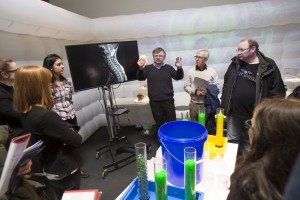Can maths help treat spinal deformities?

The University of Brighton researchers hope to help doctors better understand deformities in the human spinal cord by using mathematical modelling.
Dr Paul Harris and research student Jenny Venton, from the university’s College of Life, Health and Physical Sciences, will explain their work at the London Mathematical Society’s 150th anniversary Mathematics Festival at the Science Museum.
They will be presenting at the festival’s schools day on 27 November and to the general public on 28 and 29 November.
Visitors will be invited to become ‘undercover journalists’ to discover how mathematics helps us to understand the world around us and how it transforms people’s lives.
The University of Brighton’s research is part of an ongoing collaboration with the Brighton Centre for Regenerative Medicine and is funded by a grant from the Leverhulme Trust (RPG-2013-178).
A key part of their research is focusing on a deformation that can occur due to the formation of fluid-filled cavities in the spinal cord. Previous medical investigations have failed to find any chemical or biological process which is responsible for the formation of the cavities.
The scientists hope that a mathematical model will be able to demonstrate how the changes in the pressure of the cerebral-spinal fluid can cause the cavities to form and grow without the need for invasive medical investigations.
They hope that providing an accurate mathematical model will lead to improved treatments of spinal deformities.